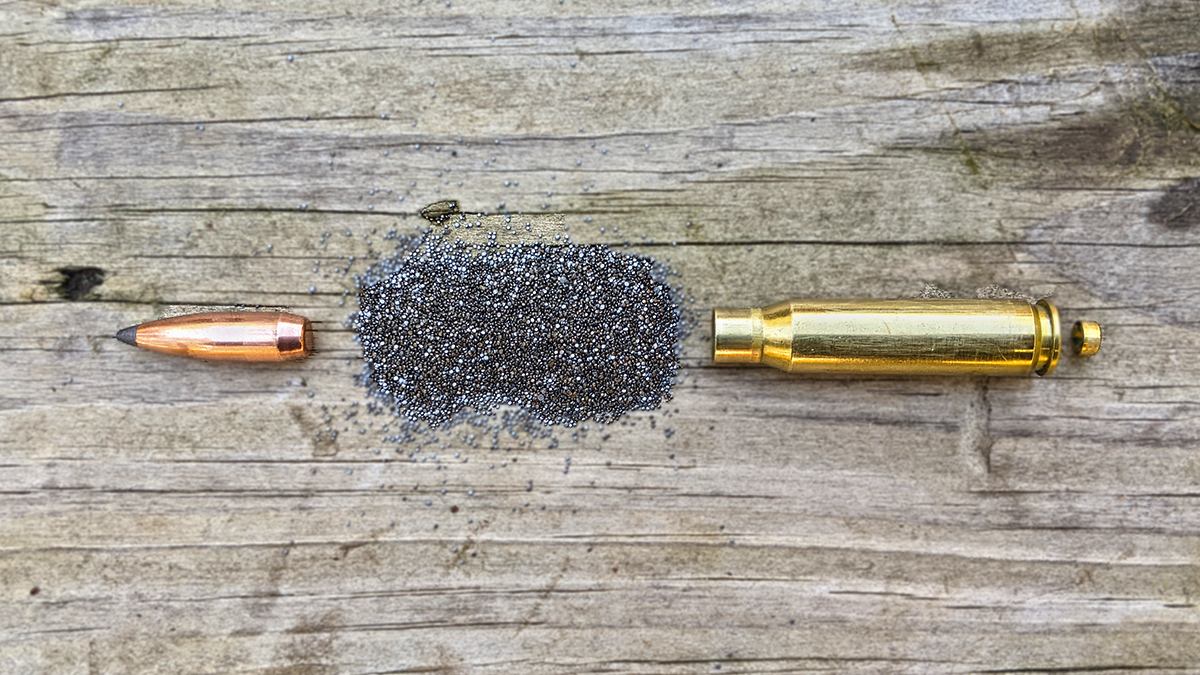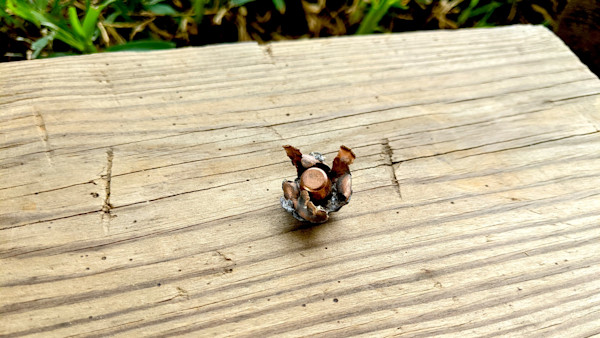
When the Great Ammunition Shortage began in earnest in the latter part of 2020, many hunters discovered with dismay that reloading supplies were also virtually impossible to find. Those who had stocked up on brass, powder, primers, and bullets were in good shape; everyone else was SOL.
Now’s the time to start preparing for the next ammo shortage. Reloading is fun, rewarding, and safe, and components are finally back in stock at most sporting goods stores. If you’ve been wanting to start rolling your own but haven’t been sure where to start, you’ve come to the right place.
Why Reload Your Own Ammunition?
There are two primary reasons to reload your own hunting ammunition: cost and control.
Reloaded ammunition is almost always cheaper than good-quality factory ammunition. You might be able to find practice ammo for something close to the cost of your reloads, but that’s less common now than it was pre-2020.
To take one back-of-the-napkin example: a decent .308 Win. hunting cartridge runs about $2 per round. You can find them above and below that price point, but that’s a representative average. If you already have .308 brass, you only need to pay for the bullets (about $0.50 per bullet), powder (about $0.36 per cartridge), and primers (about $0.09 per cartridge). That’s less than $1 per reloaded cartridge, saving you more than 50% each time you pull the trigger.
That saving doesn’t take into account the initial equipment investment (more on that below), and it’s easy to spend more on bullets. But by and large, reloading your hunting ammo will save you a good chunk of change.
Hunters also turn to reloading because it allows them to control each element of each cartridge. This article won’t get into the intricacies and frustrations of “load development,” but for now, it’s enough to know that it’s possible to tune your ammo to your rifle and optimize accuracy. Your rifle might prefer a specific kind of bullet or powder, and reloading allows you to find what your rifle shoots best and use that every time.
What Equipment Do You Need?
The list below outlines the basic equipment you need to start reloading bottleneck rifle cartridges. I would recommend purchasing a reloading kit rather than trying to purchase each item separately. You’ll save money buying the kit, and it will also come with items that may not be strictly necessary but sure are handy.
Hot tip: if the sticker price of a new kit is out of reach, you can find full kits on the used market. People often overestimate their interest in reloading, and after the press has taken up space on their workbench for two years, they offload everything at a reduced price. eBay, Craigslist, and online hunting and firearms forums are great places to look.
- Press
- Cartridge-specific die set with case holder (i.e., .308 Win., 6.5 Creedmoor, .300 Win. Mag.)
- Powder scale
- Powder funnel
- Powder trickler
- Case loading block (to hold the cases while reloading)
- Hand primer
- Calipers
- Case lube
- Reloading manual (paper or online)
- Case trimmer
- Deburring tool
- Case tumbler
Many reloading kits come with everything on this list except the case trimmer, deburring tool, and brass tumbler.
Also, I recommend a single-stage press for beginners rather than a progressive press. Progressive presses can churn out ammo more quickly, but they’re much more expensive and difficult to use. A single-stage press is more than sufficient to produce a small quantity of high-quality hunting cartridges.
What Are the Steps in the Process?
Safety should be your number-one concern whenever you’re reloading ammunition. Take your time, follow your reloading manual exactly, and double- and triple-check your work.
1. Clean your Brass This is done with a case tumbler. I use a classic vibrating tumbler with corn cob media, but rotary tumblers also work well. The goal is to get the brass shiny and clean so you don’t run into any cycling issues caused by dirty cases.
2. Case Inspection Inspect each case for obvious defects like split case mouths, other cracks or bulges, and pitting or corrosion. If you know that each case has only been fired once, it’s unlikely you’ll find any problems. If you picked up your cases at the range, definitely don’t skip this step.
3. Resize and De-Prime Once your brass is clean, it’s time to run each case through the resizing and de-priming die. The cases need to be resized because they expanded to fill your rifle’s chamber when they were fired. The resizing die gets them back to their original dimensions and pops out the old primer at the same time.
Follow the instructions that come with your caliber-specific die set, and be sure to hit the cases with a spritz of case lube so they don’t get stuck.
4. Trim the Cases Resized cases are always a little longer than their original form. If they’re longer than the “max case length” noted in your reloading manual, they’ll need to be trimmed back to the “trim-to length.”
For example, I recently reloaded a set of .308 Win. brass that was all between 2.020” and 2.025” after resizing. Since that’s longer than the max case length of 2.015”, I trimmed them down to the recommended 2.005” trim-to length. Once each case was trimmed, I used my deburring tool to make sure each case mouth was smooth.
There are many kinds of case trimmers, but mine is a hand-crank model I secure with my bench vice. It’s not great for bulk ammunition, but it works just fine for reloading 20 or 40 hunting cartridges.
5. Prime the Cases Use your hand primer to seat a new primer into the primer pocket of each case. Primers come in a variety of sizes, but “large rifle” primers are used for most big game hunting cartridges. Refer to your reloading manual for the specific kind of primer you should use.
6. Load the Cases with Powder This is the step that requires the most caution. Under- or over-charging your cases can result in catastrophic failure, which could seriously injure you or anyone standing near you.
Your reloading manual will give you a minimum and maximum charge for each kind of bullet/powder combo. For example, my manual says that if I’m reloading 165-grain soft point bullets in a .308 Win. case, I can use between 42 and 46 grains of Hodgdon Varget powder. (It also lists max and min charges for other kinds of power; Varget is just one example.)
I’ve found that 45 grains of Varget works well in my rifle, so I measure out that amount of powder using my powder scale. Use the scoop that comes in the powder canister to get close to your target weight, then use the powder trickler to get it on the nose. Charge each case using the powder funnel.
7. Seat the Bullets Once each case is primed and charged with the correct amount of powder, go back to your press to seat the bullets. This is accomplished with the bullet seating die that comes in your die set. To determine how deep the bullets should be seated, refer to your reloading manual. The manual will designate a “cartridge overall length” or “COAL” for various kinds of bullets. Find the bullet you’re using and seat the bullet to the depth that achieves that COAL. (This is where a good set of calipers is necessary.)
8. Optional: Crimp the Bullets Your die set might also come with a “crimping die.” This die simply squeezes the case into the bullet to ensure the bullet doesn’t come loose. I like to crimp cartridges that will be fired in semi-auto rifles, but I’m skeptical whether it’s necessary for cartridges fired out of bolt-action rifles. I don’t see the cartridges being jostled enough to unseat the bullets, but if it makes you feel more confident in your reloads, go for it.
Last Round
This article only scratches the surface of this topic. Each of the eight steps described above could be expanded into an article of its own, but my hope is that this 30,000-foot view communicates the relative simplicity of the reloading process. “Easy” isn’t quite the right word, but it’s definitely doable. With a little patience and care, any hunter can reload their own ammunition.





Conversation